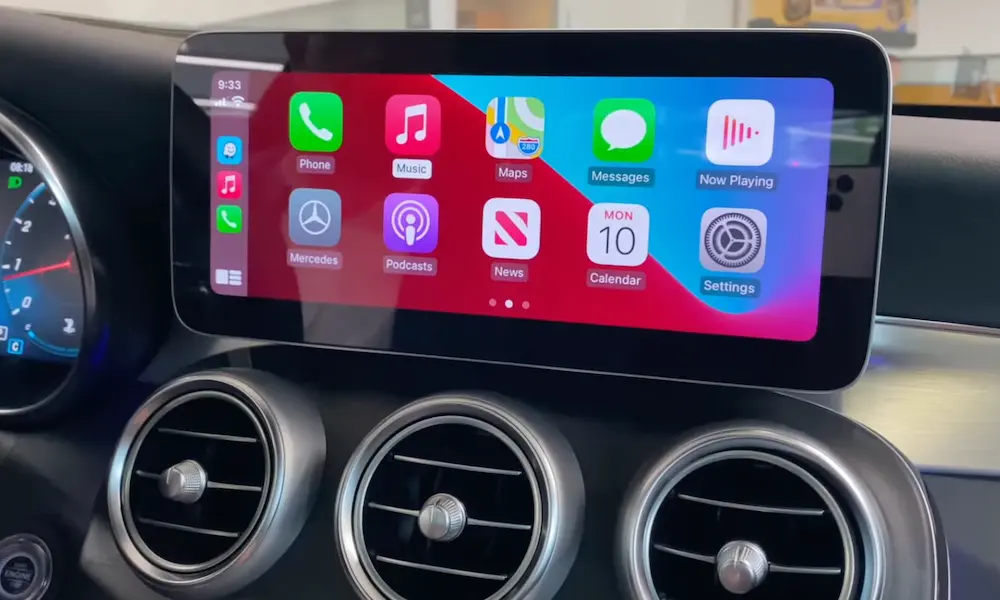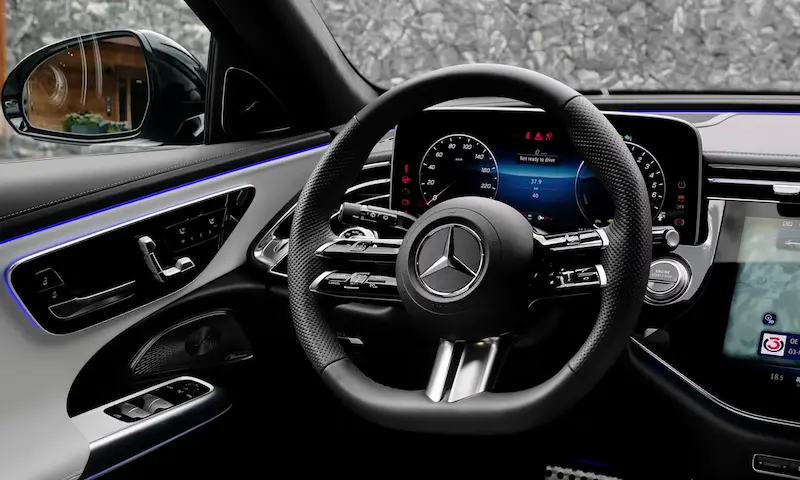A ‘display malfunction visit workshop’ notification on the instrument cluster is an indication that the information on the dash may be inaccurate. A blown fuse, faulty SAM module, or battery issue can trigger the warning.
Before attempting to replace the SAM module, you want to exhaust other options, as the module doesn’t come cheap. So, you want to conduct a full system scan to ascertain that a defective SAM module indeed caused the failure.
Mercedes Instrument Cluster and “Display Malfunction Visit Workshop” Warning
The instrument cluster has several gauges and warning lights that update the driver on the status of various systems. It is mounted behind the steering wheel directly in the driver’s line of sight for an unobstructed view.
The instrument cluster relies on different sensors. And the failure of any of the sensors will invariably result in the display of inaccurate information on the cluster. But with Mercedes Benz, the ECU triggers a display malfunction warning to notify the driver of the possible error.
The speedometer, fuel gauge, and turn indicators may also stop working when the display warning appears on the DIC. The central locking system may also not respond to commands except at close range. The headlight and other electrically controlled systems may also stop working.
Possible Triggers of a “display malfunction visit workshop” Message
Below are the possible factors that could set off a ‘display malfunction visit workshop’ warning.
Checking for a blown fuse
A malfunctioning fuse can also cause a display malfunction. All the electrical components in a vehicle are tied to a corresponding fuse to prevent a blowout during a power surge.
The failure of the fuse linked to the display system or sensors working with it can trigger the display warning. Before checking other possible causes, you should check that all fuses are working.
Faulty SAM Module
A defective SAM module can also trigger a ‘display malfunction visit workshop’ message. SAM stands for Signal Acquisition Module, and Mercedes-Benz has used them since the mid-90s.
It sends and receives data from sensors, switches, and controllers while monitoring the systems. The failure of the SAM module stalls data transmission from the sensors. This hinders the instrument cluster from communicating with the vehicle sensors.
The vehicle triggers a display malfunction warning to notify the driver that the information on the dash may be incorrect.
Mercedes vehicles often have more than one SAM module. And a display malfunction warning is usually because of the failure of the rear SAM module. Ordinarily, the module can last the vehicle’s lifetime, but water intrusion or a broken wire connection will cause it to fail.
Battery issue
A low battery or an issue with the battery control module can also set off the display warning. The battery powers all the electrical systems, sensors, and modules in the vehicle. And the battery control module regulates the battery voltage and the charging process.
The failure of either will affect electricity distribution. This invariably stalls the sensors, resulting in the display of inaccurate data on DIC. This prompts the vehicle to set off the display malfunction warning to notify the driver.
How to Fix a ‘display malfunction visit workshop’ Warning
Check for a blown fuse
You want to inspect all the fuse boxes in the vehicle to check that all the fuses are working. Check the fuse box in the engine bay, trunk, and the one inside the vehicle. Identifying a blown fuse is straightforward. A visible gap in the wire or a dark smear inside the glass signifies that the fuse is bad and needs to be replaced.
Tackling a defective SAM module
You should only consider the possibility of a failed rear SAM module after exhausting all options. Because besides the fact that the module rarely fails, they are also expensive to replace.
Oftentimes, the module fails due to water intrusion. Exposing the module to liquid can short it or lead to corrosion which eventually causes it to fail. A broken wire connection or excessive current draw can also cause the SAM module to fail.
A broken wire connection is still the cheapest when dealing with a failed rear SAM module. Most of the time, all that is required is to fix the broken wire connection.
But when the module fails due to water intrusion or excessive current draw, you may have to replace it. So, you should be sure to tackle the source of the problem to avoid recurrence. Look for how the water entered the module or the cause of the current draw.
Some second-generation MLs had faulty tail lamp seals, which exposed the rear module to water entry. So, if you drive a second-generation ML, check the condition of the tail lamp seal when replacing the rear SAM module.
Fixing the battery issue
Two factors could have triggered the display warning when dealing with a battery issue. A faulty battery control module or a low battery.
The failure of the battery control module is usually caused by jump-starting or trickle-charging the battery. And something as little as having a poor ground connection on the battery control module will cause it to malfunction. So, you should also check that the battery control module has a stable ground connection.
If the battery is low on charge, recharge it. And check that it is holding charge or get a replacement battery. Check that the battery maintains between 12.2 and 12.6 volts while the vehicle is off.
Disconnect the negative terminal for about 20 minutes after solving the battery issue. That should help clear the display malfunction warning.
Final thoughts
The failure of the instrument cluster rarely happens. Since its failure is mostly caused by the breakdown of the rear SAM module, which also rarely fails, except for water intrusion. However, a battery issue or blown fuse can also cause its failure.
And when it fails, the vehicle triggers a display malfunction warning to notify the driver that information on the instrument cluster may be inaccurate.












